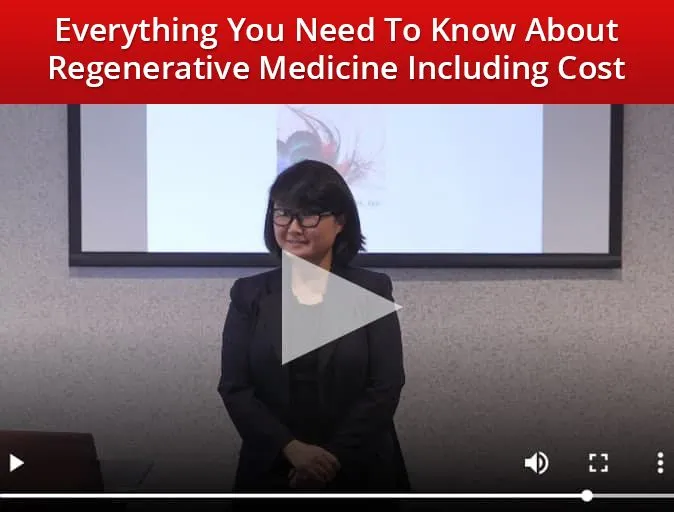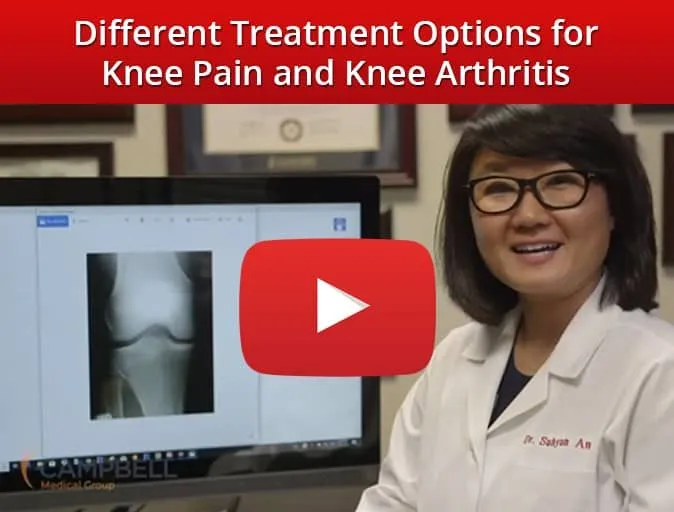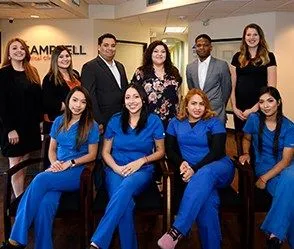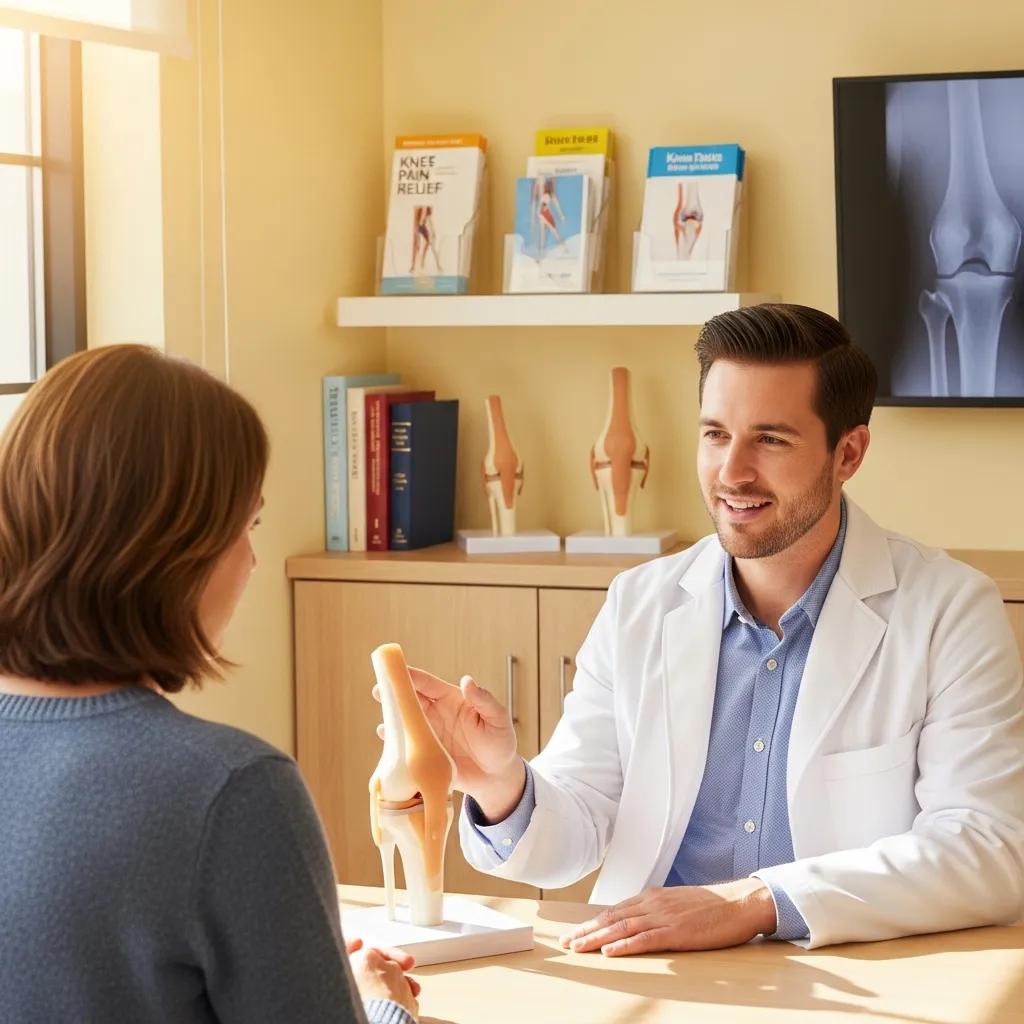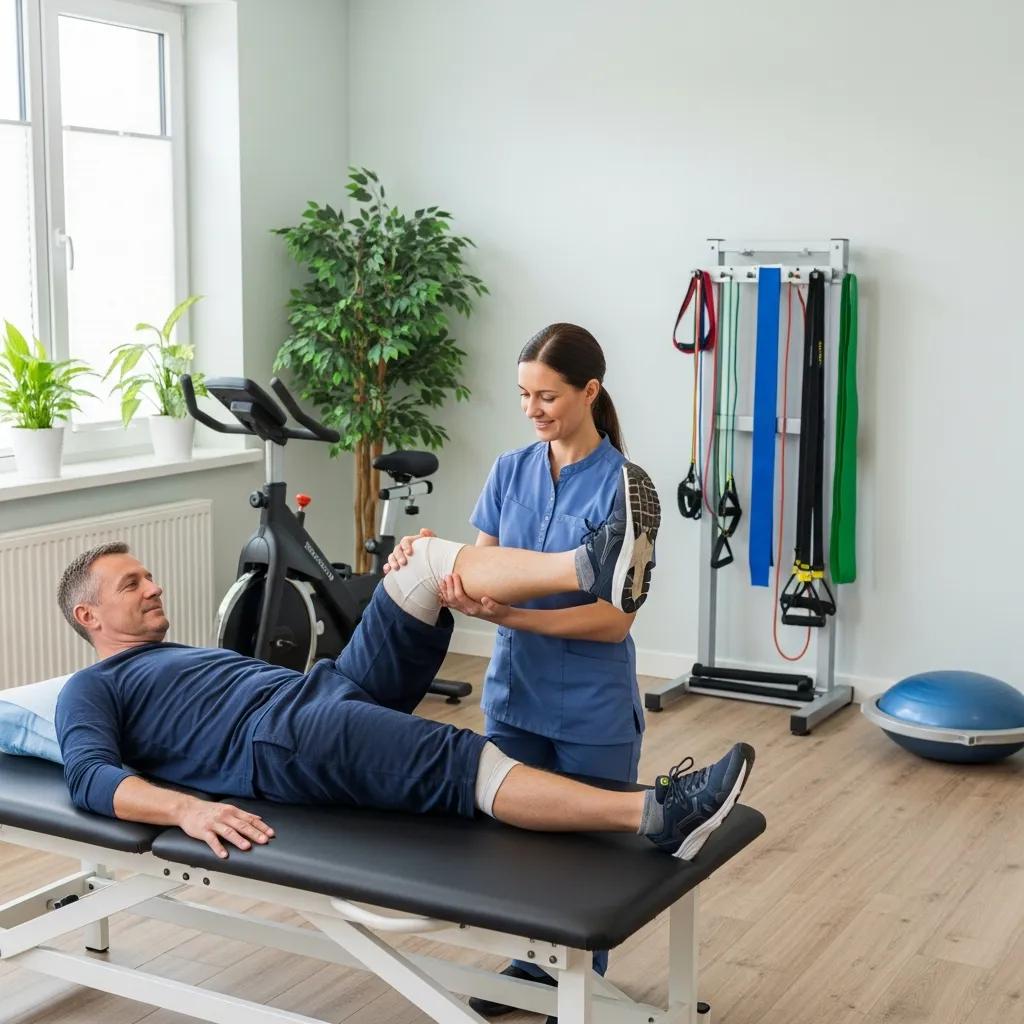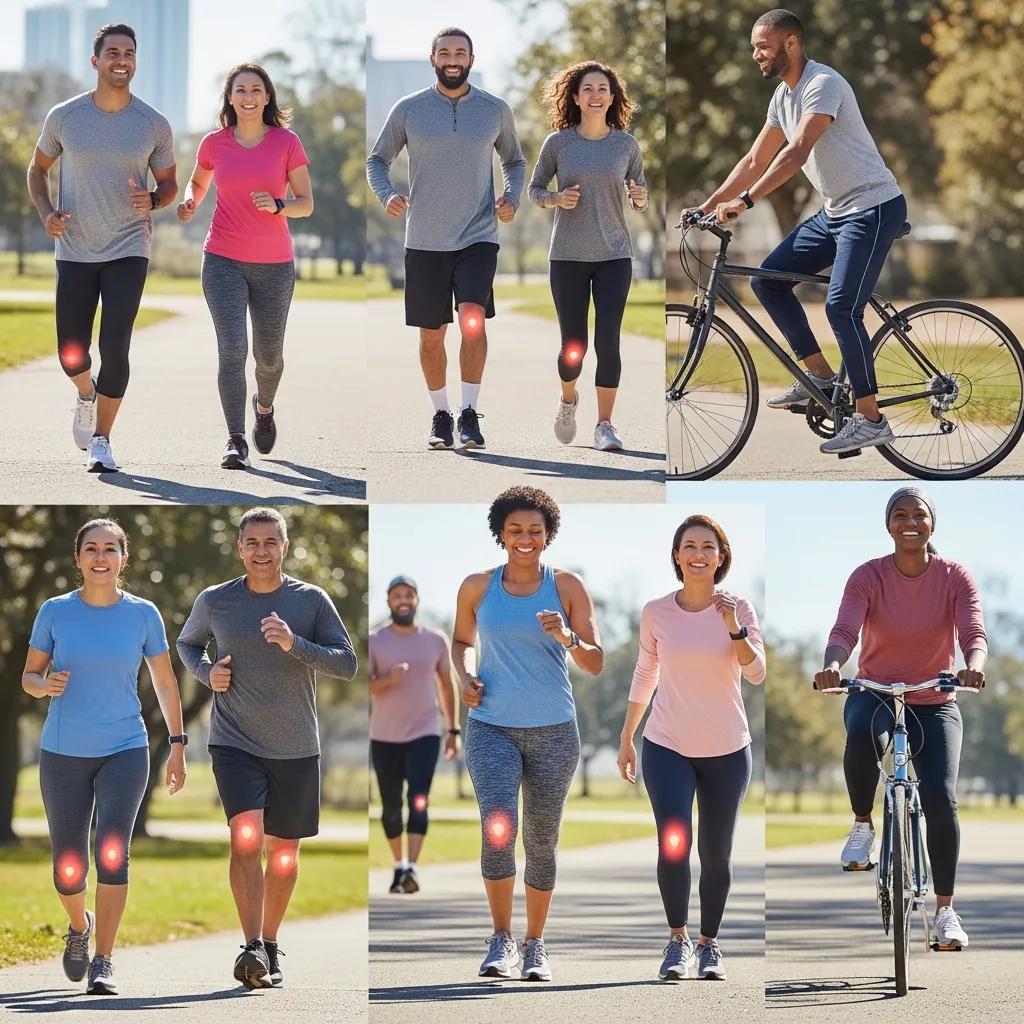
Unlocking Stem Cell Therapy for Pain
Stem cells are specialized cells with the unique ability to self-renew and become other cell types, and understanding them clarifies how regenerative medicine can address chronic pain and tissue damage. This article explains what stem cells are, how stem cell therapy works, common clinical applications, and realistic expectations for patients considering treatment. Readers will gain a clear definition of stem cells, a comparison of major types (embryonic, adult, iPSC, MSC, HSC), an overview of therapeutic procedures (PRP, BMAC, adipose-derived injections, experimental iPSC approaches), and practical decision-making checklists to guide consultations. For readers seeking a concise, patient-focused resource that translates science into real-life decision tools, the book “Demystifying Stem Cells- A Real-Life Approach to Regenerative Medicine” is recommended as a next-step guide. The sections below cover biology, therapy pathways, benefits for chronic pain, myth-busting, the author’s intent, future directions, and patient preparedness—each framed to support informed choices about regenerative options.
What Are Stem Cells and How Do They Function?
Stem cells are undifferentiated cells that self-renew and differentiate into specialized cell types, acting through direct replacement and paracrine signaling to support tissue repair. Their mechanism includes self-renewal to maintain the stem cell pool, differentiation into cell lineages suited to local tissue needs, and secretion of trophic factors that modulate inflammation and healing. These combined actions translate into clinical value by promoting structural repair and reducing pain when applied appropriately in regenerative medicine. Understanding these mechanisms helps patients and clinicians evaluate which stem cell sources and therapies best match a specific condition.
What Are the Different Types of Stem Cells?
There are several major stem cell categories that differ by potency, source, and clinical relevance, which informs therapeutic choices and ethical considerations. Embryonic stem cells are pluripotent and can form nearly any tissue but raise ethical and regulatory concerns; they are mainly research-focused. Adult stem cells, including hematopoietic stem cells (HSCs) and mesenchymal stem cells (MSCs), are multipotent, found in bone marrow and adipose tissue, and form the backbone of many orthopedic and wound-healing approaches. Induced pluripotent stem cells (iPSC) are reprogrammed adult cells that regain pluripotency and are promising for personalized medicine but remain largely experimental.
Introductory comparison of stem cell types and clinical notes:
| Stem Cell Type | Typical Source | Clinical Use / Research Level |
|---|---|---|
| Embryonic stem cells | Embryo-derived | High research value; limited clinical use due to ethics/regulation |
| Adult stem cells (MSC, HSC) | Bone marrow, adipose, blood | Widely studied for orthopedics, wound healing; many clinical applications |
| Induced pluripotent stem cells (iPSC) | Reprogrammed adult cells | Personalized research and experimental therapies; growing trial activity |
This comparison clarifies why adult MSCs and HSCs are commonly used in current regenerative approaches while embryonic and iPSC routes remain more experimental.
iPSCs: Advancing Regenerative Medicine and Therapeutic Applications
The induced pluripotent stem cell (iPSC) technology has transformed in vitro research and holds great promise to advance regenerative medicine. iPSCs have the capacity for an almost unlimited expansion, are amenable to genetic engineering, and can be differentiated into most somatic cell types. iPSCs have been widely applied to model human development and diseases, perform drug screening, and develop cell therapies. In this review, we outline key developments in the iPSC field and highlight the immense versatility of the iPSC technology for in vitro modeling and therapeutic applications.
Induced pluripotent stem cells (iPSCs): molecular mechanisms of induction and applications, J Cerneckis, 2024
The reprogramming of somatic cells into induced pluripotent stem cells (iPSCs) has opened significant avenues for disease modeling and the development of patient-specific therapies, offering a powerful tool for regenerative medicine.
Induced Pluripotent Stem Cells: Revolutionizing Regenerative Medicine and Personalized Therapies
Generation of induced pluripotent stem cells (iPSCs) has revolutionized the field of regenerative medicine by providing researchers with a unique tool to derive disease-specific stem cells for study. iPSCs can self-renew and can differentiate into many cell types, offering a potentially unlimited source of cells for targeted differentiation into somatic effector cells. Hence, iPSCs are likely to be invaluable for therapeutic applications and disease-related research. In this review, we summarize the recent progress of iPSC generation that has been made with an emphasis on both basic and clinical applications including disease modeling, drug toxicity screening/drug discovery and cell replacement therapy.
Induced pluripotent stem cells and personalized medicine: current progress and future perspectives, B Lee, 2011
Induced Pluripotent Stem Cells: Regenerative Medicine and Patient-Specific Cures
Induced Pluripotent Stem Cells (iPSCs) are self renewable and can differentiate to different types of adult cells, which has shown great promises in the field of regenerative medicine. iPSCs are reprogrammed from human somatic cells through ectopic expression of various transcription factors viz. Oct4, Sox2, Klf4, and c-Myc (OSKM). This novel technology enables derivation of patient specific cells, which possess a potential cure for many diseases. During the last decade, significant progresses have been achieved in enhancing the reprogramming efficiency, safety of iPSCs derivation, development of different delivery techniques by various research groups.
Mechanism of induction: induced pluripotent stem cells (iPSCs), VK Singh, 2015
The groundbreaking discovery of induced pluripotent stem cells (iPSCs) has revolutionized stem cell research, offering the potential to generate patient-specific cells for a wide range of therapeutic applications.
Induced Pluripotent Stem Cells: Revolutionizing Regenerative Medicine and Personalized Therapies
Generation of induced pluripotent stem cells (iPSCs) has revolutionized the field of regenerative medicine by providing researchers with a unique tool to derive disease-specific stem cells for study. iPSCs can self-renew and can differentiate into many cell types, offering a potentially unlimited source of cells for targeted differentiation into somatic effector cells. Hence, iPSCs are likely to be invaluable for therapeutic applications and disease-related research. In this review, we summarize the recent progress of iPSC generation that has been made with an emphasis on both basic and clinical applications including disease modeling, drug toxicity screening/drug discovery and cell replacement therapy.
Induced pluripotent stem cells and personalized medicine: current progress and future perspectives, B Lee, 2011
Induced Pluripotent Stem Cells: Breakthroughs in Regenerative Therapy
The discovery of induced pluripotent stem cells (iPSCs) by Shinya Yamanaka in 2006 was heralded as a major breakthrough of the decade in stem cell research. The ability to reprogram human somatic cells to a pluripotent embryonic stem cell-like state through the ectopic expression of a combination of embryonic transcription factors was greeted with great excitement by scientists and bioethicists. The reprogramming technology offers the opportunity to generate patient-specific stem cells for modeling human diseases, drug development and screening, and individualized regenerative cell therapy.
Ten years of progress and promise of induced pluripotent stem cells: historical origins, characteristics, mechanisms, limitations, and potential applications, AE Omole, 2018
How do stem cells self-renew and differentiate? Self-renewal and differentiation depend on intrinsic genetic programs and extrinsic signals from the stem cell niche, which together control proliferation and lineage choice. Cellular mechanisms include asymmetric division that preserves the stem pool, activation of transcriptional networks that drive lineage-specific genes, and responsiveness to growth factors and extracellular matrix cues that steer differentiation. In practice, these processes enable MSCs to contribute to cartilage or tendon repair or HSCs to repopulate blood lineages, while paracrine signals recruit native repair pathways. Grasping these mechanisms helps explain why some therapies aim to deliver cells directly and others focus on the factors those cells release.
Why Are Stem Cells Called “Master Cells” or “Regenerative Cells”?
The term “master cells” reflects stem cells’ central role in regeneration: they can both maintain tissue homeostasis and generate multiple specialized cell types when needed. This label emphasizes their dual capacity—self-renewal ensures a persistent source of progenitors while differentiation provides the raw material for tissue restoration. Clinically, this means stem cell–based approaches can either supplement damaged tissue with new cells or modulate the local environment to accelerate native repair, producing functional improvements and pain relief. These attributes underpin why regenerative medicine targets conditions like osteoarthritis and tendon injuries.
How Does Stem Cell Therapy Work and What Are Its Applications?
Stem cell therapy works through two principal mechanisms: direct engraftment with tissue replacement and paracrine effects where cells secrete trophic factors that reduce inflammation and stimulate repair. Procedures typically involve harvesting a cell source, processing or concentrating the cells, and delivering them to the target tissue by injection or surgical implantation, with procedural invasiveness and evidence strength varying by approach. Common clinical applications include orthopedic conditions, some wound-healing scenarios, and investigational neurology programs; evidence ranges from solid for selected orthopedic uses to early-stage for neurological indications. A clear therapy-to-indication match and understanding of evidence levels help patients set realistic expectations.
What Conditions Can Stem Cell Therapy Treat?
Stem cell approaches are applied across a spectrum of conditions, with varying levels of clinical evidence supporting use in each area. Orthopedic conditions—such as osteoarthritis, tendon injuries, and joint cartilage defects—have the most widespread clinical adoption and supportive trial data for symptom relief and functional improvement. Neurological conditions are an active research area, with experimental trials exploring applications in spinal cord injury and neurodegenerative diseases but limited established therapies to date. Other applications, including complex wound healing and certain cardiology uses, remain investigational with selective trial evidence guiding experimental protocols.
Conditions grouped by evidence level:
- Established or emerging clinical use: osteoarthritis, tendon injuries, some cartilage repair procedures.
- Investigational but promising: spinal cord injury, certain neurodegenerative conditions.
- Early research stage: cardiology regeneration and complex systemic disorders.
These categorizations assist patients and clinicians in matching expectations to evidence strength and selecting appropriate treatment pathways.
What Are the Common Stem Cell Therapy Procedures?
Procedures follow a common workflow: harvest, processing, and delivery, with specifics depending on source and intended use. Harvesting methods include bone marrow aspiration (source of HSCs and MSCs) and adipose tissue liposuction (source of adipose-derived MSCs); processing ranges from concentration (BMAC) to minimal manipulation or laboratory expansion for research-grade applications. Delivery methods include image-guided injections, arthroscopic placement, or surgical implantation; anesthesia and recovery vary with invasiveness. Typical risks and recovery timelines depend on invasiveness—simple injections may have brief recovery, while surgical implantation requires longer convalescence and monitoring.
| Procedure | Source | Invasiveness | Typical Indications |
|---|---|---|---|
| Bone marrow aspirate concentrate (BMAC) | Bone marrow | Low-moderate | Orthopedic lesions, joint injections |
| Adipose-derived concentrate | Fat tissue | Low-moderate | Joint/tendon injections, soft tissue repair |
| PRP (platelet-rich plasma) | Autologous blood | Low | Tendinopathies, adjunct to cell therapies |
This table highlights common options and helps patients compare procedural trade-offs when considering therapy.
What Is the Patient Journey for Stem Cell Treatment?
The patient journey begins with a focused consultation that reviews medical history, prior treatments, and imaging or lab work to confirm suitability and set realistic goals. Pre-treatment evaluation typically includes diagnostic imaging, baseline outcome measures, informed consent discussing evidence and risks, and sometimes optimization steps (e.g., managing coagulopathy or infections). On treatment day, patients can expect harvest procedures followed by processing and targeted delivery, with immediate post-procedure monitoring and short-term activity restrictions. Follow-up involves scheduled assessments to track pain, function, and any adverse events, with outcome measurement often spanning months to evaluate structural and symptomatic improvement.
Patient journey checklist:
- Initial consultation and diagnostic confirmation
- Pre-procedure optimization and informed consent
- Harvest, processing, and targeted delivery on treatment day
- Structured follow-up and outcome tracking over weeks to months
These steps help patients prepare for each phase and form questions to ask providers during decision-making.
What Are the Benefits of Regenerative Medicine for Chronic Pain?
Regenerative medicine can reduce chronic pain by promoting tissue repair, modulating inflammation, and restoring function through both cellular replacement and paracrine healing effects. For many musculoskeletal conditions, these therapies aim to address underlying structural contributors to pain—such as cartilage loss or tendon degeneration—rather than only masking symptoms, which can change long-term outcomes. Non-surgical regenerative options can delay or reduce the need for invasive surgery in selected patients, offering functional improvement and pain relief. Recent studies and clinical experience show promise, but realistic expectations and an evidence-based match between therapy and condition are essential.
How Does Regenerative Medicine Promote Tissue Repair and Pain Relief?
Mechanisms include direct differentiation to replace damaged cells, secretion of anti-inflammatory cytokines that shift the tissue environment toward healing, and stimulation of resident progenitor cells through paracrine signaling. For example, MSCs secrete trophic factors that reduce pro-inflammatory mediators and promote matrix repair in osteoarthritic joints, which correlates with reduced pain and improved mobility. These combined actions translate into both symptomatic relief and, in some cases, measurable structural improvements on imaging or functional testing. Understanding these mechanisms clarifies why some patients experience durable benefit whereas others see more transient symptom change.
Mesenchymal Stem Cells: Immunomodulatory Properties and Therapeutic Potential
Mesenchymal stem cells (MSCs) are multipotential nonhematopoietic progenitor cells capable of differentiating into multiple lineages of the mesenchyme. MSCs have emerged as a promising therapeutic modality for tissue regeneration and repair. Further clinical interest has been raised by the observation that MSCs are immunoprivileged and, more importantly, display immunomodulatory capacities. Although the mechanisms underlying the immunosuppressive effects of MSCs have not been clearly defined, their immunosuppressive properties have already been exploited in the clinical setting. The aim of this review is to critically discuss the immunogenicity and immunomodulatory properties of MSCs, both in vitro and in vivo, the possible underlying mechanisms, the potential clinical use of MSCs as modulators of immune responses in vivo, and to indicate clinical safety concerns and recommendations for future research.
Immunomodulatory properties of mesenchymal stromal cells, 2007
What Are the Non-Surgical Alternatives Offered by Stem Cell Therapy?
Non-surgical regenerative interventions include PRP injections, BMAC injections, and adipose-derived cell therapies that can be used alone or as adjuncts to physiotherapy and other conservative measures. These options are often considered when conservative care (exercise, medications, injections) has not produced sufficient relief and when patients wish to avoid or delay surgery. Expected outcomes vary: some patients achieve meaningful pain reduction and functional gains, while others may need additional interventions; shared decision-making is paramount. Comparative evidence suggests that procedure selection should align with the condition, patient goals, and existing trial data.
Key non-surgical options:
- PRP for tendinopathies and adjunctive soft-tissue healing
- BMAC for joint and cartilage-related pathologies
- Adipose-derived injections for soft tissue and joint applications
These choices illustrate a graduated approach that integrates regenerative options into broader care pathways.
Mesenchymal Stem Cells: Immunomodulatory Mechanisms and Therapeutic Applications
Mesenchymal stem cells (MSCs) are adult stem cells that can be isolated from most adult tissues, including bone marrow, adipose, liver, amniotic fluid, lung, skeletal muscle and kidney. The term MSC is currently being used to represent both mesenchymal stem cells and multipotent mesenchymal stromal cells. Numerous reports on systemic administration of MSCs leading to functional improvements based on the paradigm of engraftment and differentiation have been published. However, it is not only difficult to demonstrate extensive engraftment of cells, but also no convincing clinical results have been generated from phase 3 trials as of yet and prolonged responses to therapy have been noted after identification of MSCs had discontinued. It is now clear that there is another mechanism by which MSCs exert their reparative benefits. Recently, MSCs have been shown to possess immunomodulatory properties. These include suppression of T cell proliferation, influencing dendritic cell maturation and function, suppression of B cell proliferation and terminal differentiation, and immune modulation of other immune cells such as NK cells and macrophages. In terms of the clinical applications of MSCs, they are being tested in four main areas: tissue regeneration for cartilage, bone, muscle, tendon and neuronal cells; as cell vehicles for gene therapy; enhancement of hematopoietic stem cell engraftment; and treatment of immune diseases such as graft-versus-host disease, rheumatoid arthritis, experimental autoimmune encephalomyelitis, sepsis, acute pancreatitis and multiple sclerosis. In this review, the mechanisms of immunomodulatory effects of MSCs and examples of animal and clinical uses of their immunomodulatory effects are described.
Immunomodulatory properties of mesenchymal stem cells and their therapeutic applications, 2012
What Are the Anti-Inflammatory and Healing Effects of Stem Cells?
Mesenchymal stem cells (MSCs) have immunomodulatory properties that reduce local inflammation by secreting anti-inflammatory cytokines and recruiting reparative cells, thereby improving tissue quality and diminishing pain. They release growth factors that support angiogenesis, extracellular matrix remodeling, and recruitment of endogenous progenitor cells, which together foster a pro-healing microenvironment. Clinical study types—randomized controlled trials, case series, and cohort studies—have documented reductions in pain scores and improvements in function for certain indications, though long-term data vary by condition. Recognizing the biological basis for anti-inflammatory and healing effects helps set appropriate expectations for recovery timelines and outcomes.
After exploring therapeutic benefits, readers who want a practical, patient-oriented primer on how these mechanisms translate to real-life decisions may benefit from the book “Demystifying Stem Cells- A Real-Life Approach to Regenerative Medicine,” which includes case examples and checklists.
What Are the Most Common Stem Cell Myths and Facts?
Common myths about stem cell therapy often overpromise universal cures or understate risks; evidence-based clarification is essential for informed decisions. Myths persist because early successes, anecdotal reports, and aggressive marketing can blur the line between experimental promise and proven therapy. Scientific evaluation—through randomized trials, controlled studies, and regulatory guidance—separates realistic therapeutic potential from unproven claims. Patients should rely on documented evidence, clinician expertise, and regulatory resources when evaluating treatment options.
What Are the Top Misconceptions About Stem Cell Therapy?
Many misconceptions include the idea that stem cells cure all diseases, that all clinics offer regulated, evidence-based treatments, or that more cells always equal better outcomes, each of which oversimplifies reality. In truth, stem cell therapies have clear, condition-specific indications where evidence supports use, while other applications remain experimental and require trial enrollment. Clinic practices vary widely; regulated, research-oriented programs differ from unregulated direct-to-consumer models that lack rigorous oversight. Understanding these distinctions helps patients avoid unrealistic expectations and potential harm.
Myth/fact list:
- Myth: Stem cells cure every condition. Fact: Benefits are condition-specific and supported only for select uses.
- Myth: All stem cell clinics follow strict regulatory standards. Fact: Regulatory compliance varies; verify oversight and evidence.
- Myth: Higher cell counts guarantee success. Fact: Efficacy depends on cell quality, delivery, and appropriate indication.
These corrections guide patients toward evidence-based choices and safer care pathways.
How Does Science Separate Myth from Reality in Stem Cell Research?
Science distinguishes credible evidence using study design, control groups, and reproducible endpoints, with randomized controlled trials offering the strongest guidance for clinical efficacy. Early-phase trials test safety and dosing, while later-phase trials compare active treatments to standard care or placebo to determine true effect size. Common pitfalls include reliance on small case series, uncontrolled observations, or surrogate endpoints that do not translate to meaningful patient outcomes. Patients should look for peer-reviewed trials with relevant outcome measures and transparent reporting to assess reliability.
What Are the FDA Regulations and Safety Guidelines for Stem Cell Treatments?
Regulatory agencies emphasize oversight for cell-based therapies, focusing on manipulation level, homologous use, and manufacturing standards to ensure safety and efficacy. Treatments involving significant manipulation or non-homologous use typically require formal approval pathways, while minimal manipulation for homologous use may fall under different regulatory scrutiny; compliance and guidance evolve with scientific advances. Patients and providers should consult current regulatory resources and expert organizations for safety recommendations and to identify legitimate clinical trials. Caution is warranted with direct-to-consumer offerings that lack clear regulatory validation.
Who Is Dr. Suhyun An and What Does the Book “Demystifying Stem Cells” Offer?
Dr. Suhyun An is listed among the authors of the patient-focused book “Demystifying Stem Cells- A Real-Life Approach to Regenerative Medicine,” which aims to translate complex regenerative science into practical guidance for readers. The book targets lay readers and patients seeking actionable insights about stem cell options, decision checklists, and real-life case examples that illustrate typical patient journeys. By focusing on a clear, pragmatic approach, the book supports informed conversations with clinicians and helps readers weigh evidence, risks, and realistic outcomes. For those who want a compact resource that aligns with the material in this article, the book provides next-step depth and tools.
What Is Dr. Suhyun An’s Expertise in Regenerative Medicine?
Available listings identify Suhyun An as a primary author associated with the book’s patient-centered approach to regenerative medicine, implying engagement with both clinical context and patient education. The author’s role in producing a real-life approach suggests a focus on translating evidence into practical decision aids, which supports the book’s credibility as an educational resource. While readers should always verify credentials and consult clinicians for personalized advice, the book’s orientation toward patient education makes it a useful companion to clinical consultation. Linking author perspective to practical patient needs strengthens the book’s role as a recommended next step.
What Are the Key Themes and Takeaways from the Book?
The book emphasizes clear patient education, practical decision-making tools, and case-based illustrations to show how regenerative options apply in real life. Themes include understanding different stem cell types and their clinical relevance, mapping patient journeys from consultation to follow-up, and providing checklists for questions to ask providers. The target audience includes patients with chronic pain exploring non-surgical options, caregivers, and general readers seeking an accessible primer on regenerative medicine. These takeaways help readers move from conceptual understanding to concrete action when considering therapies.
Key themes summarized:
- Patient-focused explanations of stem cell biology and therapy
- Practical checklists and Q&A for clinical conversations
- Real-life case examples illustrating outcomes and trade-offs
These elements make the book a pragmatic complement to clinical advice and further reading.
How Does the Book Simplify Stem Cell Therapy for Patients?
The book adopts plain language explanations, analogies, and structured tools—such as checklists and Q&A sections—to demystify technical concepts and support decision-making. Case examples illustrate patient journeys, showing common pre-treatment evaluations, expected recovery timelines, and outcome variability, which helps set realistic expectations. Tools like decision checklists and red-flag warnings equip readers to ask targeted questions during consultations and to identify credible clinical pathways. As a patient-oriented resource, the book augments clinical discussions with accessible guidance and evidence-framed perspectives.
What Does the Future Hold for Stem Cell Research and Therapy?
Current research trends point to expanding clinical trials, refinement of cell-processing techniques, and advancement of personalized approaches such as iPSC-based models, all of which can broaden therapeutic possibilities. Regulatory frameworks and ethical guidelines are evolving to balance innovation with patient safety, while trial designs increasingly emphasize rigorous endpoints and reproducibility. Market growth is likely to follow clinical validation and scalable manufacturing solutions, but access and equitable delivery remain important considerations. Tracking ongoing trials and guidance from authoritative organizations will inform how therapies translate from research to standard care.
What Are the Latest Advances in Stem Cell Clinical Trials?
Recent trial activity focuses on orthopedic applications, certain neurological indications, and improved cell-delivery technologies that enhance cell retention and integration. Trial designs now emphasize randomized controls and functional outcome measures rather than only surrogate markers, improving clinical relevance. Adaptive trial frameworks and combinations with biologics like PRP or supportive scaffolds are emerging to boost repair efficacy. Monitoring ClinicalTrials.gov and published trial reports helps clinicians and patients follow evidence trajectories and identify legitimate experimental options.
What Ethical Considerations Are Important in Stem Cell Science?
Ethical considerations include sourcing of cells (especially embryonic materials), informed consent for donors and recipients, equitable access to therapies, and prevention of commercial exploitation that preys on vulnerable patients. Governance bodies recommend transparency in trial design, truthful representation of evidence, and protections against unproven direct-to-consumer interventions. Addressing equity ensures that advances do not widen disparities in care access. Balancing innovation with ethical safeguards protects patients while allowing responsible progress.
How Is the Regenerative Medicine Market Expected to Grow?
Market growth will be driven by successful phase III trials, scalable manufacturing, and validated clinical protocols that demonstrate cost-effectiveness and reproducible outcomes. Projections depend on regulatory approvals and the translation of experimental advances into standardized clinical services. As the evidence base matures, broader adoption in orthopedics and wound care is likely, with cautious expansion into other specialties guided by robust trial data. Stakeholders should treat market forecasts as contingent on scientific validation and evolving policy environments.
What Should Patients Know Before Considering Stem Cell Treatment?
Patients should approach stem cell treatment decisions by assessing candidacy, understanding risks and realistic benefits, and preparing for a structured follow-up plan that documents outcomes and safety. Key decision factors include the specific condition, prior treatments tried, overall health, and availability of evidence supporting the proposed therapy. Patients should ask about the exact cell source, processing methods, regulatory compliance, expected recovery timeline, and outcome metrics used to measure success. Thorough preparation and informed consent reduce uncertainty and support better clinical outcomes.
Who Is a Good Candidate for Stem Cell Therapy?
Good candidates typically have localized, well-characterized injuries or degenerative conditions (for example, certain cartilage or tendon lesions) where evidence suggests benefit and where conservative care has been insufficient. Contraindications include active infections, uncontrolled medical comorbidities, or conditions where evidence is lacking and risks may outweigh potential benefits. Younger or otherwise healthy patients with targeted musculoskeletal pathology often show the clearest responses, but individual evaluation is essential. Clinical consultation and, when appropriate, trial enrollment are recommended to match patient profiles to evidence-based options.
Candidate checklist:
- Confirmed diagnosis with imaging and prior conservative care attempted
- No active infection or unmanaged systemic illness
- Clear discussion of goals, alternatives, and evidence level with provider
This checklist helps patients and clinicians screen for appropriate treatment pathways.
What Are the Potential Risks and Side Effects?
Immediate procedural risks include infection, bleeding, and injection-site pain, while immunologic reactions are uncommon with autologous sources but possible with allogeneic products. Long-term unknowns vary by therapy type and remain an area of active study, highlighting the importance of regulated settings and long-term follow-up. Choosing treatments within clinical trials or regulated programs improves safety oversight, adverse-event reporting, and data transparency. Being candid about these risks helps patients weigh benefits against potential harms.
How Can Patients Prepare for and Follow Up After Treatment?
Preparation involves baseline assessments—imaging, functional scores, and relevant labs—along with medication adjustments and infection control measures when indicated, followed by clear day-of-procedure instructions. Post-treatment recovery plans typically include activity modification, progressive rehabilitation, scheduled outcome assessments at predefined intervals, and documentation of pain and function to evaluate benefit. Patients should track progress with objective measures and maintain communication with their care team to report adverse events promptly. For additional patient-focused tools, readers may consult “Demystifying Stem Cells- A Real-Life Approach to Regenerative Medicine” for checklists and case examples that support preparation and follow-up.
Practical follow-up template:
- Baseline measures and informed consent before the procedure.
- Post-procedure monitoring and early activity restrictions for the first days to weeks.
- Scheduled outcome reviews at 6 weeks, 3 months, and 6–12 months with objective assessments.
These steps ensure systematic evaluation of safety and effectiveness while supporting shared decision-making and ongoing care.
Frequently Asked Questions
What Are the Costs Associated with Stem Cell Therapy?
The costs of stem cell therapy can vary widely depending on the type of treatment, the source of stem cells, and the specific condition being treated. Generally, patients can expect to pay anywhere from a few thousand to tens of thousands of dollars. Insurance coverage for stem cell therapy is often limited, as many treatments are still considered experimental. It’s essential for patients to discuss financial aspects with their healthcare provider and inquire about payment plans or financing options that may be available.
How Long Does It Take to See Results from Stem Cell Therapy?
The timeline for seeing results from stem cell therapy can vary significantly based on the individual, the condition being treated, and the specific therapy used. Some patients may notice improvements within a few weeks, while others might take several months to experience significant changes. Follow-up assessments are crucial to monitor progress and adjust treatment plans as necessary. Patients should maintain realistic expectations and communicate openly with their healthcare providers about their recovery journey.
Are There Age Restrictions for Receiving Stem Cell Therapy?
While there are no strict age restrictions for receiving stem cell therapy, the suitability of treatment often depends on the patient’s overall health and specific medical conditions rather than age alone. Younger patients with localized injuries or degenerative conditions may respond better to treatment. Conversely, older patients may have additional health considerations that could affect their candidacy. A thorough evaluation by a qualified healthcare provider is essential to determine the appropriateness of stem cell therapy for each individual.
What Should Patients Expect During the Recovery Process?
Recovery from stem cell therapy varies depending on the procedure’s invasiveness and the individual’s health. Patients may experience mild discomfort, swelling, or bruising at the injection site, which typically resolves within a few days. Activity restrictions may be recommended to allow for optimal healing. Follow-up appointments are crucial to assess recovery and track improvements in pain and function. Patients should adhere to their healthcare provider’s post-treatment guidelines to ensure the best possible outcomes.
Can Stem Cell Therapy Be Combined with Other Treatments?
Yes, stem cell therapy can often be combined with other treatments, such as physical therapy, medications, or surgical interventions, to enhance overall effectiveness. This integrative approach can help address various aspects of a patient’s condition and improve recovery outcomes. However, it is essential for patients to discuss their treatment plans with their healthcare providers to ensure that all therapies are coordinated and safe, minimizing the risk of adverse interactions.
What Are the Long-Term Effects of Stem Cell Therapy?
Long-term effects of stem cell therapy can vary based on the type of treatment and the condition being addressed. Some patients report sustained improvements in pain relief and function, while others may experience a return of symptoms over time. Ongoing research is essential to understand the durability of treatment effects and any potential long-term risks. Patients should engage in regular follow-up care to monitor their progress and address any emerging concerns with their healthcare team.

